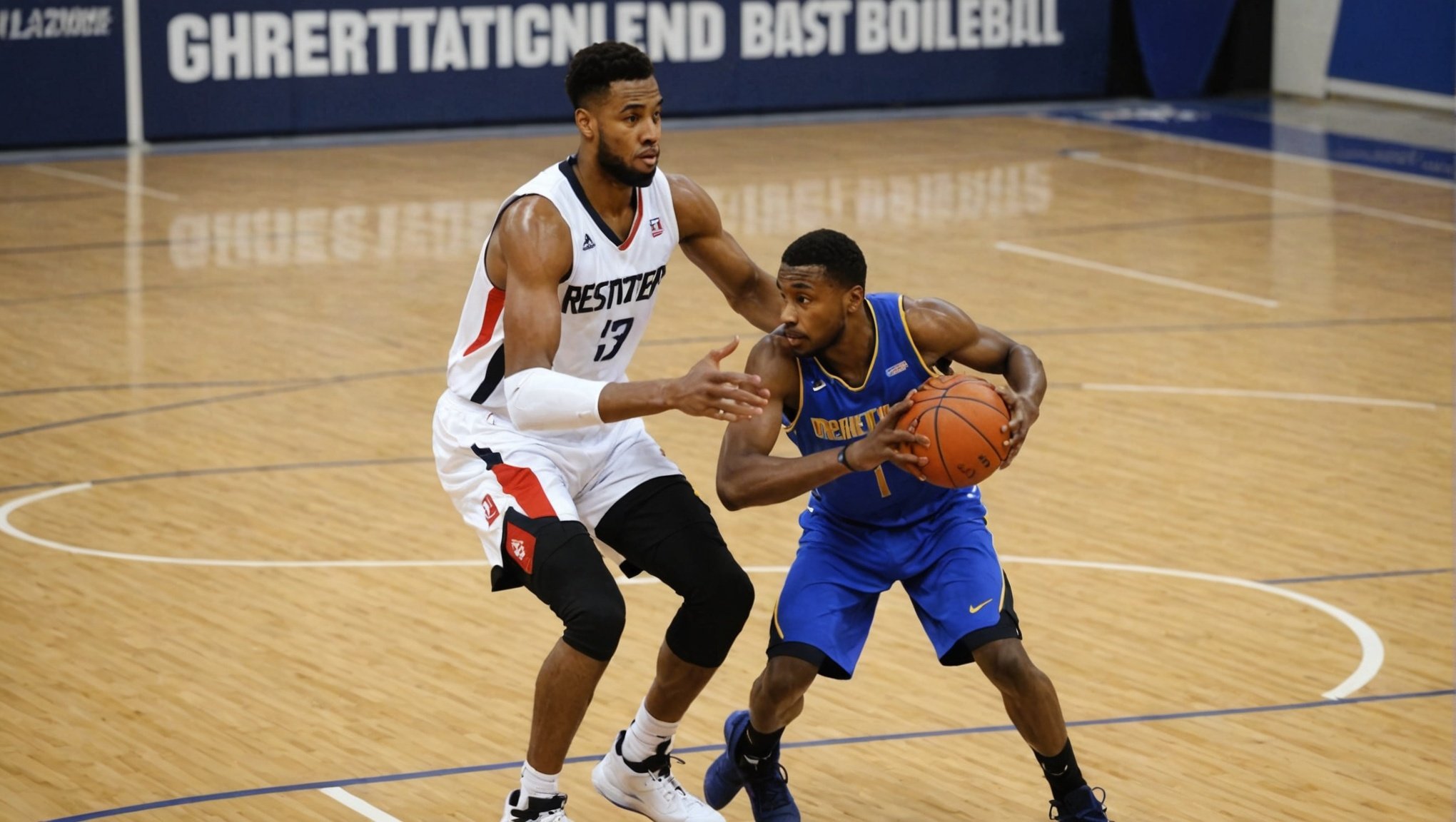Rebounding is a fundamental skill that can elevate a basketball center's game. Effective strategies empower players to secure those vital second-chance points and enhance overall team performance. This guide explores practical techniques tailored for UK basketball centers, focusing on positioning, timing, and physical conditioning. By honing these skills, players can assert their dominance in the paint and become invaluable assets to their teams. Let’s break down the key approaches that can transform your rebounding prowess on the court.
Understanding Rebounding in Basketball
Rebounding is a fundamental aspect of basketball that significantly influences the game's outcome. At its core, rebounding involves gaining possession of the ball after a missed field goal or free throw attempt. This skill is crucial because it provides teams with additional opportunities to score or defend, directly impacting the game's flow and momentum.
Also to see : Navigating Club Transfers: Legal Considerations for Basketball Players in the UK
Importance of Rebounding
Rebounding is often linked to game success. Teams with higher rebounding statistics tend to control the pace, leading to more scoring chances. For instance, offensive rebounds can result in second-chance points, while defensive rebounds prevent the opposing team from scoring. These statistics underscore the importance of rebounding in basketball strategy.
Role of Centers
The role of centers in rebounding is pivotal. Centers, typically the tallest players, are positioned near the basket, making them ideal for securing rebounds. Their physical presence and ability to box out opponents are crucial in maintaining team dynamics and securing possession. Centers are often tasked with anchoring the defense and initiating fast breaks through effective rebounding. This unique role highlights the strategic importance of centers in a team's rebounding efforts.
Also read : Top Techniques for UK Basketball Coaches to Build Unshakeable Team Spirit
Physical Drills to Enhance Rebounding Skills
Improving rebounding skills requires dedicated physical training and targeted basketball exercises. Incorporating effective rebounding drills into practice sessions can significantly enhance a player's ability to secure the ball.
Effective Rebounding Drills
To develop rebounding prowess, players can engage in various drills that focus on agility, strength, and timing. One popular exercise is the "Rebound and Outlet Pass Drill," which involves a player rebounding the ball and immediately executing a quick outlet pass to a teammate. This drill enhances coordination and quick decision-making.
Step-by-Step Instructions
- Box-Out Drill:
- Position players in pairs.
- Focus on maintaining a low stance and using the body to shield opponents from the basket.
- Tip Drill:
- Players continuously jump to tip the ball against the backboard.
- This drill improves timing and vertical leap.
Incorporating Drills into Practice
To maximize benefits, coaches should integrate these drills into regular practice routines. Begin with warm-ups to prevent injuries, and gradually increase intensity. Consistent practice of these exercises not only boosts individual skills but also strengthens team dynamics, leading to improved game performance.
Mental Strategies for Rebounding Success
In basketball, mental toughness plays a crucial role in rebounding success. It is not just about physical ability; the mental aspect is equally important. Players must develop focus techniques to maintain concentration and anticipate plays effectively. This mental preparation can make the difference between a missed opportunity and a successful rebound.
Enhancing game awareness is another key strategy. Players should practice visualising different game scenarios, which helps them anticipate where the ball might land after a missed shot. This kind of mental rehearsal sharpens their instincts and improves their ability to react quickly during a game.
Case studies highlight players who have enhanced their rebounding through mental strategies. For instance, some athletes have used meditation and visualisation to improve their focus and game awareness. These techniques help them stay calm under pressure and maintain a clear mind, allowing for better decision-making on the court.
By integrating these mental strategies, players can elevate their rebounding game, making them more effective and reliable contributors to their team's success.
Nutrition and Conditioning for Optimal Performance
Optimising athletic performance in basketball requires a combination of athlete nutrition and effective conditioning. Nutrition plays a pivotal role in enhancing a player's energy levels, strength, and overall performance on the court. A well-structured performance diet tailored for basketball players can significantly impact their ability to rebound effectively.
Dietary Recommendations for Basketball Players
Basketball players should focus on a balanced diet rich in carbohydrates, proteins, and healthy fats to fuel their bodies. Carbohydrates are essential for providing energy during games and training sessions, while proteins aid in muscle repair and growth. Including fruits, vegetables, and whole grains ensures a supply of vitamins and minerals crucial for maintaining stamina and recovery.
The Role of Conditioning
Conditioning is equally vital in maintaining rebounding effectiveness. A well-conditioned player exhibits improved agility, strength, and endurance, which are crucial for securing rebounds. Incorporating cardiovascular exercises, strength training, and flexibility routines into a player's regimen enhances their ability to perform consistently throughout the game.
By integrating a performance diet with regular conditioning, basketball players can optimise their rebounding skills, contributing to their overall success on the court.
Utilizing Technology to Improve Rebounding Skills
Incorporating sports technology into basketball training can significantly enhance rebounding skills. Various tools are available to help players and coaches gain insights into performance and identify areas for improvement.
Video Analysis in Rebounding
Video analysis is a powerful tool for evaluating rebounding techniques. By reviewing game footage, players can pinpoint specific moments where they missed opportunities or excelled in securing rebounds. This method allows for a detailed breakdown of positioning, timing, and decision-making during rebounds. Coaches can use this data to tailor training sessions, focusing on correcting weaknesses and reinforcing strengths.
Performance Tracking Tools
Performance tracking tools offer comprehensive insights into a player's skill development. These tools can monitor metrics such as jump height, speed, and reaction time, providing valuable data to refine rebounding strategies. Some advanced systems even offer real-time feedback, enabling players to make immediate adjustments during practice. By integrating these technologies, players can achieve a more nuanced understanding of their performance, leading to targeted improvements in their rebounding abilities.
Embracing these technological advancements not only boosts individual performance but also enhances overall team dynamics, paving the way for more effective rebounding strategies.
Expert Insights from Coaches and Players
Gaining insights from experienced coaches and players can elevate your understanding of effective rebounding techniques. Coaching tips often emphasise the importance of positioning and anticipation. Coaches advise players to maintain a strong stance and keep their eyes on the ball's trajectory to predict where it will land.
Interviews with Successful Players
Player interviews reveal that many successful rebounders credit their prowess to relentless practice and mental preparation. For example, players often highlight the significance of developing a keen sense of timing and body control. They stress the value of learning from every game situation and adapting strategies accordingly.
Lessons Learned from Professionals
Professionals offer valuable lessons on rebounding strategies. They recommend focusing on fundamentals like boxing out and maintaining a low centre of gravity. These techniques help players gain an advantage over their opponents. Additionally, they advise incorporating feedback from coaches and peers to continuously improve rebounding skills.
By integrating these expert insights, players can refine their approach to rebounding, making them more effective on the court. Embracing advice from both coaches and players allows for a well-rounded understanding of what it takes to excel in rebounding.
Common Mistakes and How to Avoid Them
In basketball, rebounding mistakes can hinder a team's performance significantly. Identifying and correcting these errors is crucial for effective skill development.
Typical Rebounding Errors
Common performance errors include poor positioning, lack of anticipation, and inadequate boxing out. Players often fail to read the ball's trajectory, leading to missed opportunities. Additionally, some players rely too much on their height rather than focusing on technique, which can be detrimental against skilled opponents.
Strategies for Correction
To address these mistakes, players should engage in targeted drills that emphasise fundamentals such as maintaining a low stance and improving timing. Coaches can facilitate this by providing real-time feedback during practice, helping players adjust their techniques accordingly. Regularly reviewing game footage also aids in recognising and correcting habitual errors.
Importance of Self-Assessment
Self-assessment is vital in refining rebounding skills. Players should routinely evaluate their performance, identifying areas for improvement. By setting personal goals and tracking progress, they can enhance their rebounding effectiveness. Encouraging a mindset of continuous learning and adaptation is key to overcoming rebounding challenges.
Success Stories: Players Who Excelled in Rebounding
Exploring player success stories in rebounding offers valuable insights into the methods and dedication required to excel in this crucial basketball skill. Several UK basketball players have made significant strides in their rebounding achievements, showcasing inspiring examples of perseverance and innovation.
One notable example is a player who transformed his game through rigorous training and mental conditioning. He focused on enhancing his timing and positioning, which are critical components of effective rebounding. By analysing game footage and receiving feedback from coaches, he refined his techniques, leading to a dramatic improvement in his performance.
Another player attributed his success to a disciplined approach to nutrition and conditioning. By maintaining a balanced diet and engaging in targeted strength training, he increased his agility and endurance, which are essential for sustaining high-level rebounding throughout a game.
These inspiring examples highlight the importance of a holistic approach to skill development. Players can draw inspiration from these stories by understanding the dedication and strategic planning involved in achieving rebounding excellence. By emulating these methods, aspiring rebounders can elevate their game and contribute significantly to their team's success.
Incorporating Rebounding Skills into Game Play
Integrating rebounding tactics into gameplay requires a strategic approach to enhance team dynamics. Effective rebounding starts with understanding the game strategy and positioning players to maximise opportunities. Communication among teammates is crucial; players must constantly signal their positions and intentions to ensure coordinated efforts.
Tactical Adjustments for Rebounding
To optimise rebounding, teams should make tactical adjustments based on the opponent's playing style. For instance, if facing a team with strong shooters, positioning players closer to the basket can increase defensive rebound chances. Conversely, against teams with aggressive inside play, spreading players out can create space for offensive rebounds.
Team dynamics also play a significant role in rebounding success. Assigning specific roles, such as designating a player to focus on boxing out while another anticipates the ball's trajectory, can streamline the rebounding process. Developing a seamless transition from defence to offence through quick outlet passes further enhances rebounding effectiveness.
By incorporating these strategies, teams can leverage their rebounding skills to gain a competitive edge, maintain possession, and control the game's pace. This holistic approach ensures that rebounding becomes an integral part of the overall game plan.
Resources for Further Learning and Development
To excel in basketball, accessing the right basketball resources is essential. A variety of training materials and educational content are available to help players refine their rebounding skills and overall game performance.
Books, Videos, and Online Courses
A wealth of books and videos focus on the art of rebounding. These resources provide detailed insights into techniques and strategies. Online courses offer interactive learning experiences, allowing players to engage with content at their own pace. Look for courses that include video demonstrations and expert interviews to enhance understanding.
Clinics and Camps in the UK
Participating in local clinics and camps can significantly benefit players. These events provide hands-on training and the opportunity to learn from experienced coaches. Many UK-based camps focus on skill development, offering tailored sessions on rebounding techniques.
Online Forums and Communities
Engaging with online forums and communities connects players with peers and experts. Platforms like basketball forums and social media groups offer a space to share experiences, seek advice, and discuss the latest in basketball resources. These communities are invaluable for continuous learning and staying updated on new training materials.













